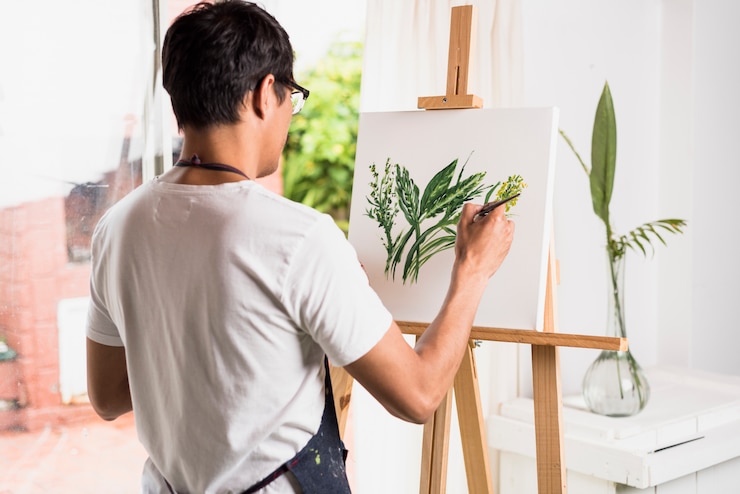
As the name suggests, the one-stroke painting technique means achieving everything in just one stroke. This includes shading, highlighting, and blending – all of these can be done with a single stroke instead of using multiple ones. All you need to do is load different colors onto a flat brush. It can be used on various different surfaces.
Is this technique for beginners or experienced painters?
Both! Although the one-stroke painting technique was developed with beginners in mind, it is fully accessible to everyone. People who have never painted before find it just as enjoyable as those who have been painting for years. One of the reasons why it has become so popular is because it is so accessible and easy to learn. It has attracted many new people to painting and has caught the attention of many professional painters.
Who came up with this idea?
The one-stroke painting technique was designed by American author and artist Donna Dewburry. She paints flowers and animals in her demonstrations, but the technique can be used to paint practically anything. Why has this painting technique become so popular? Simply because it allows you to quickly and easily create very beautiful works of art.
How do I load my paintbrush?
For one-stroke painting, you should use paintbrushes developed by Donna because they are best suited for this technique. On her website, there are many different options to choose from. To load your paintbrush, simply create small puddles of paint on your palette. Dip one corner of your brush into one color, then flip it over and dip the corner into another color. Continue stroking the brush back and forth across the paint to fully load it. You can add as many different colors as you want, but for beginners, it’s best to start with two colors.
How do I do the strokes properly?
Brushes are typically flat and have a slanted edge. To do a typical stroke, simply position the brush upright on the slanted edge, then press down while moving the brush and ending up on the slanted edge. The more pressure you apply, the wider the stroke will be. Move the paintbrush differently to create different effects. A good way to practice different techniques is to paint different flower petals.
Flower petals
To create a teardrop petal shape, place the paintbrush on the slanted edge, then press down so the bristles bend. Then pivot the paintbrush around until you’ve created a teardrop shape and lift the paintbrush up to the slanted edge. Thin, pointed petals are very easy to do; simply lean down on the slanted edge and slide the paintbrush up to the tip of the petal and release. Twist the paintbrush to have the petals bend. Petals with jagged edges are done by pushing down on the bristles and slowly wiggling the paintbrush up. When you’re near the tip of the petal, smoothly slide the paintbrush the rest of the way and lift it up to the slanted edge. Then reverse the direction of the bristles and lean down on them. Work your way down to the base of the petal by applying pressure to the paintbrush and slowly slide back to the base.
Many possibilities
The examples given are just a few of the many different things you can do with the one stroke painting technique. While it’s easy to get started, you need to practice to become really proficient at it, and flower petals are good practice for beginners. The more you use this painting method, the more you realize how much potential it has. You can use all sorts of different colors and different types of paintbrushes to create different effects. People even decorate household items using this technique. The possibilities are endless!
